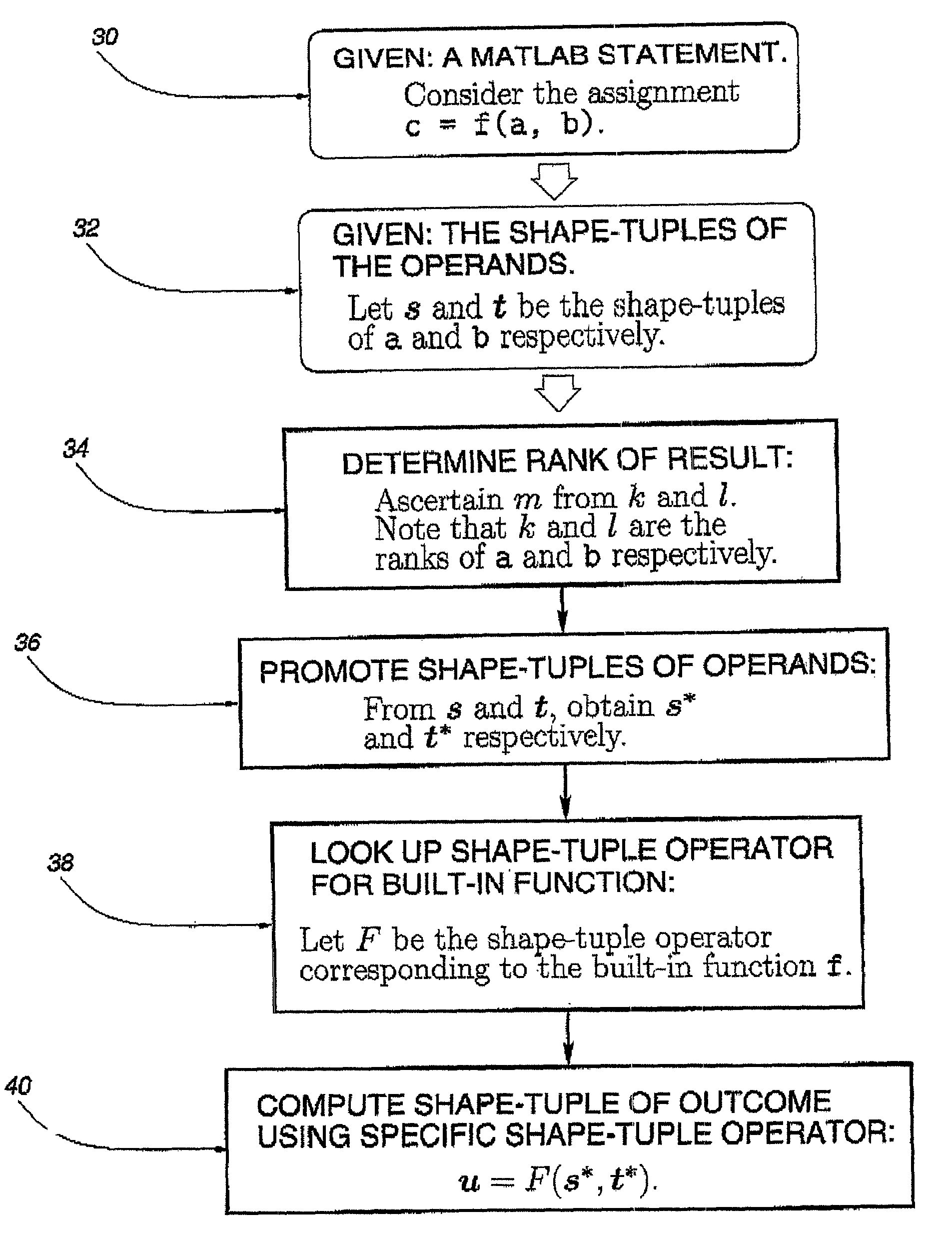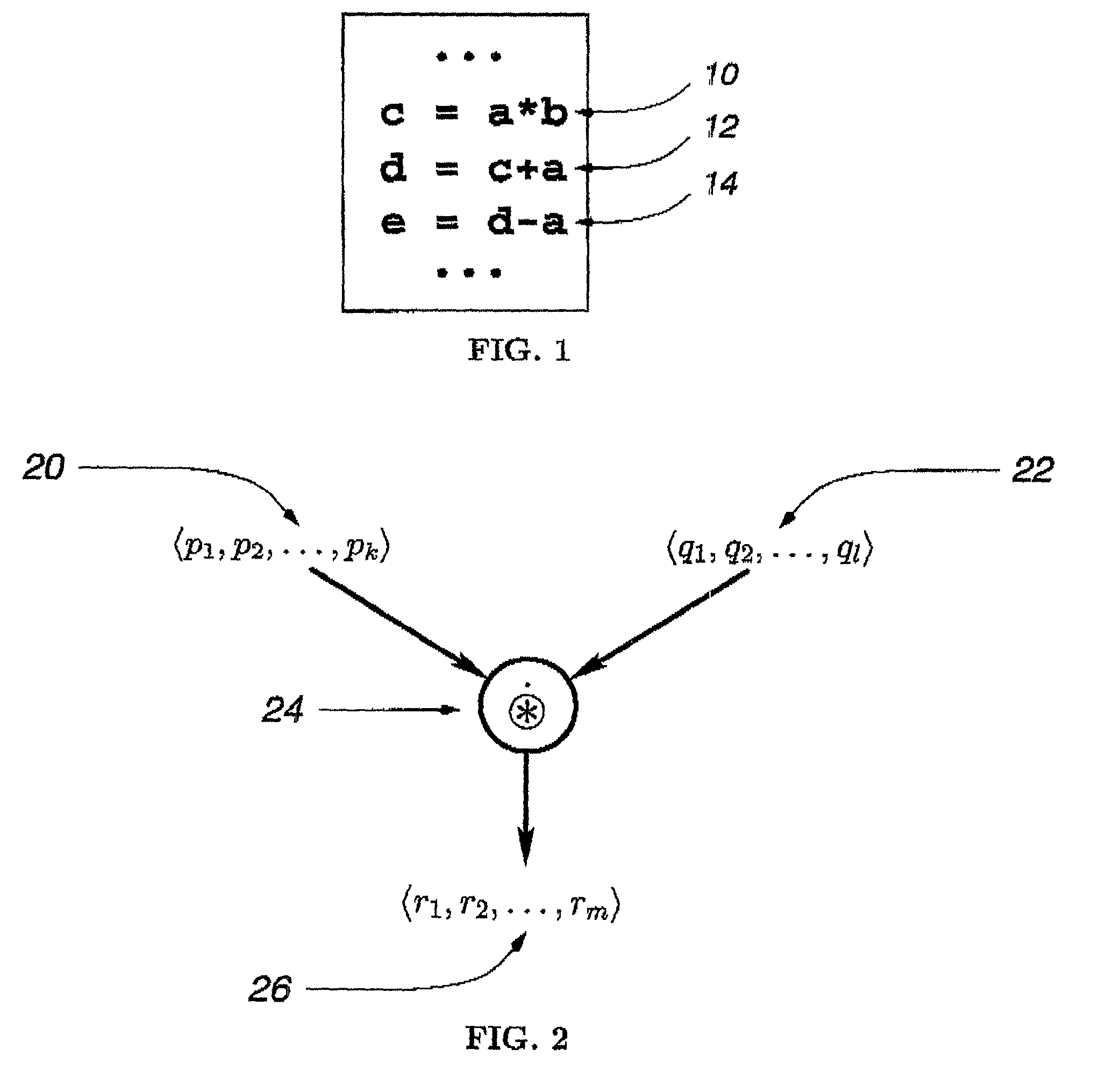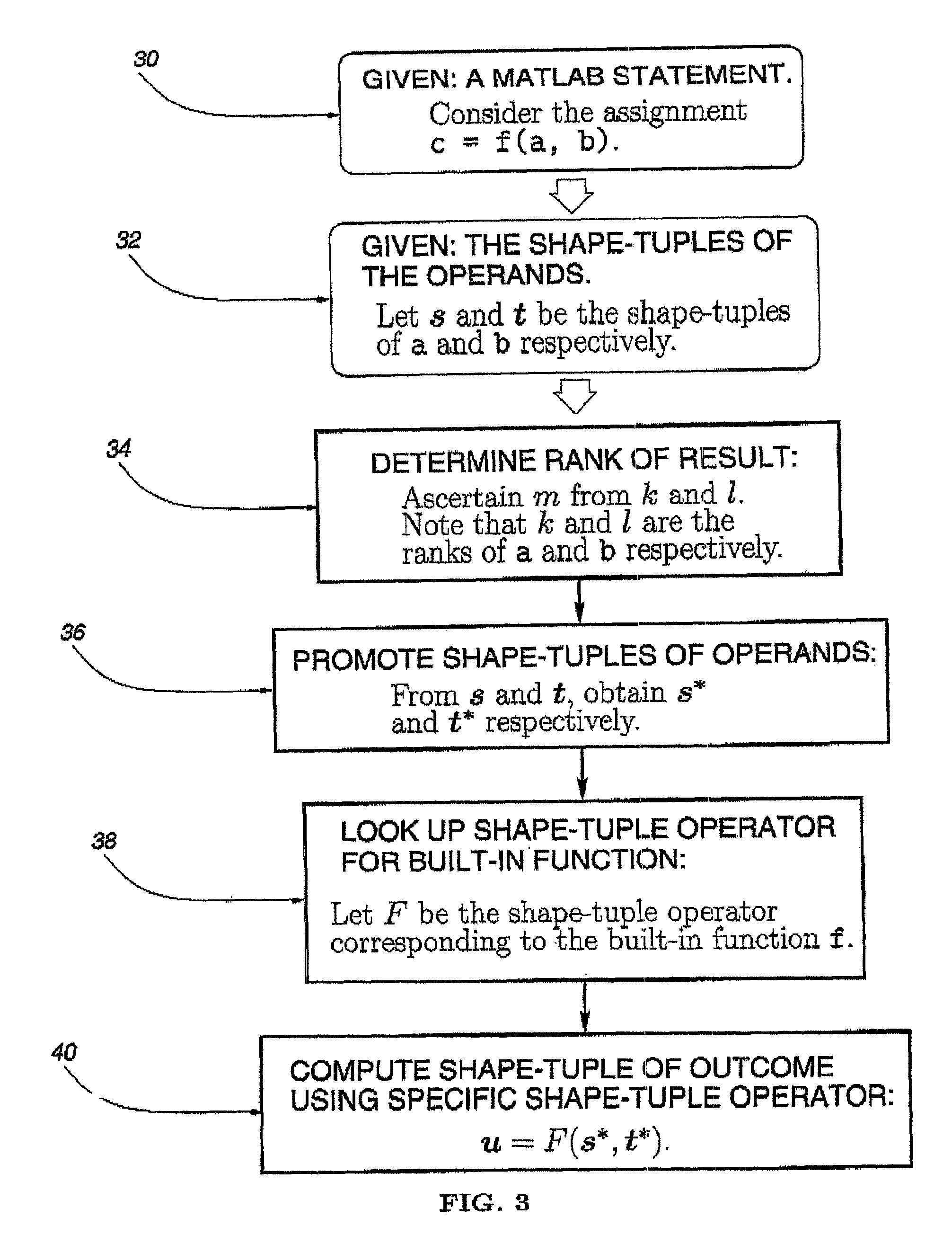Method for array shape inferencing for a class of functions in MATLAB
a technology of arrays and functions, applied in the field of array-based languages, can solve the problems of difficult shape inferencing in matlab languages, slow execution of matlab, and difficult approach, and achieve the effects of avoiding array conformability checking, optimizing memory allocation, and improving cod
- Summary
- Abstract
- Description
- Claims
- Application Information
AI Technical Summary
Benefits of technology
Problems solved by technology
Method used
Image
Examples
example 1
Comparisons with the Shadow Variable Approach
[0037]Let us reconsider the code fragment shown in FIG. 1. In the shadow variable approach, the static inferencing mechanism will fail because the extents of the matrices a and b will not be known exactly at compile time. For both a and b, shadow variables will be generated at compile time to resolve the shape information at run time. The approach will not attempt to infer at compile time that if the assignment to d succeeds, the subsequent assignment to e will also succeed and that both e and d would then have the same shapes.
In the proposed framework, we obtain the following two equations corresponding to those two statements by looking up the table in FIG. 5:
u=s{circle around (+)}t, (Eg:1.1)
v=u{circle around (+)}t. (Eg: 1.2)
where s, t, u and v represent the shape-tuple classes of the program variables c, a, d and e respectively. By substituting Eq. (Eg:1.1) into Eq. (Eg:1.2), we obtain
v=(s{circle around (+)}t){circle around (+)}t.
Fro...
example 2
Inferring in the Presence of Loops
Consider the following code fragment that involves a while loop:
[0038]S1: a←Λ;
[0039]S2: b←Λ;
[0040]S3: while ( . . . ),
[0041]S4: c←a.*b;
[0042]S5: a←c;
[0043]S6: end;
From statement S4 and FIG. 5, we get
u1=si−1{circle around (+)}t (Eg:2.1)
where ul and sl indicate the respective shape-tuple classes of c and a in the ith iteration (i>1) of the loop.
From statement S5, we also have
sl=ul (Eg:2.2)
Hence, by substituting Eq.(Eg:2.1) into Eq.(Eg:2.2), we arrive at
sl=si−1{circle around (+)}t.
∴sl=(si−2{circle around ( )}t){circle around (+)}t.
From FIG. 6, {circle around (+)} is associative. Hence
sl=si−2{circle around (+)}(t{circle around (+)}t).
Applying the idempotent law, the last equation becomes
sl=si−2{circle around (+)}t.
Proceeding thus, we therefore arrive at the following:
sl=s0{circle around (+)}t for all i≧1. (Eg:2.3)
The above result is important because it leads to the following useful inferences and optimizations:[0044]1. If the assignments to a and b ...
PUM
 Login to View More
Login to View More Abstract
Description
Claims
Application Information
 Login to View More
Login to View More - R&D
- Intellectual Property
- Life Sciences
- Materials
- Tech Scout
- Unparalleled Data Quality
- Higher Quality Content
- 60% Fewer Hallucinations
Browse by: Latest US Patents, China's latest patents, Technical Efficacy Thesaurus, Application Domain, Technology Topic, Popular Technical Reports.
© 2025 PatSnap. All rights reserved.Legal|Privacy policy|Modern Slavery Act Transparency Statement|Sitemap|About US| Contact US: help@patsnap.com



